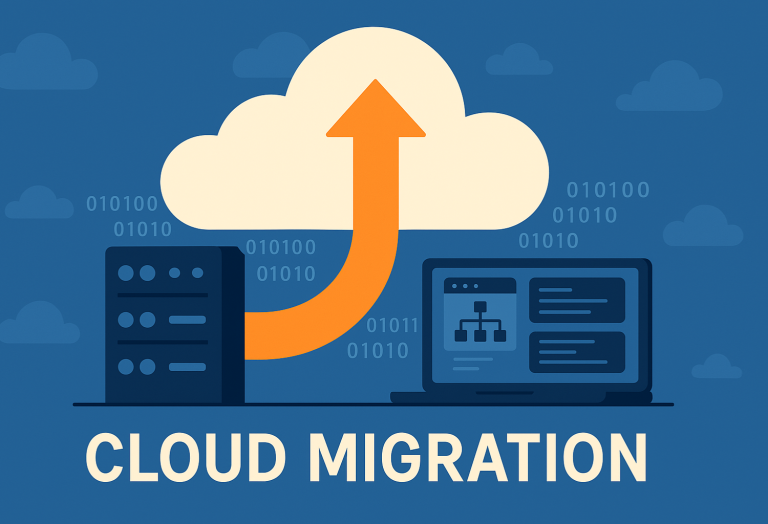
Business owners are always concern about security challenges. Moving your business infrastructure to the cloud does not eliminate the security concern but makes it easier to identify and resolve vulnerabilities in real-time. When you opt for a Shared Responsibility Model, your cloud service provider takes responsibility for the cloud security, including the data centre’s physical safety. On the other hand, the cloud customer is responsible for the security of the applications and data in the cloud. Here are the top five cloud security challenges and their mitigating measures:
Challenge 1: Cloud Configuration Management
Misconfiguration is one of the most common challenges causing most cloud data breaches. Disabled or improper cloud security configurations are quite common sources of user error in different public cloud platforms, including Amazon Web Services (AWS), Microsoft Azure, Google Cloud, and so on. While public cloud platforms come with vast capabilities, these are not always the ultimate solutions. For these platforms, it is a common issue to have improper configure or disabled settings. Even an accidental overlook of password restrictions can leave your organization open to security vulnerabilities.
Misconfiguration of crucial cloud tools stops you from getting optimum cloud facilities. Improper configuration of CloudTrail results incomplete or missing change logs, so the administrators won’t be able to encounter when something has been changed or who has made the change.
To avoid misconfiguration issues, administrators need proper knowledge and visibility into public cloud configuration management. This will help them to ensure that everything is configured correctly. You can take the help of a cloud infrastructure company to get visibility into a public cloud. They will help you with critical changes to configurations, resources, and security groups and also help administrators to manage the security of their public cloud. Most of the misconfigurations can be corrected by your service provider and provide you with a seamless working experience.
Challenge 2: Identity and Access Management Controls
Identity and access management (IAM) policies are a vital aspect of the cloud— these are meant to control the access and modification authority of specific data. In case of public cloud environments, IAM policies allow administrators to add specific users or groups and enable specific permissions for those accounts. Therefore, maintain IAM solutions are crucial aspects to address some of the most common cloud security challenges.
Credential compromise is a vital threat in cloud-based environments, and these types of attacks are difficult to detect. IAM solutions are one of the effective ways to prevent such attacks.
Companies can protect their sensitive data by ensuring that only restricted individuals have access to it. But it is not so easy to track all the accounts across the organization. So, you can put all users into groups and set required permissions for multiple accounts—this will be an easier process. In such a situation, monitoring who has access to what is a top priority for public cloud architects and operators. Your IT infrastructure partner can make the tracking IAM and permissions simple. Their security tools can automatically map and group all user accesses and also provide centralized control across multiple cloud accounts.
Challenge 3: Monitor Your Cloud Environment
Effective cloud environment monitoring is essential to avoid cloud security challenges. For effective monitoring, it is essential to evolve security operations processes and workflows at the same time as the cloud. Even the supporting workforce needs to upskill their knowledge on a regular basis to tackle cloud security challenges and deal with cutting-edge technologies.
You can consider adopting automated solutions. This helps analysts collect and monitor the growing volumes of log data created by cloud platforms. Security Orchestration, Automation and Response (SOAR) platforms, and others based on open-source technologies and standards can work across multiple vendors’ tools and cloud providers’ platforms. You can also consider artificial intelligence and machine learning-assisted tools to help you filter data to reduce alert volumes.
Challenge 4: Cloud Visibility
One of the features of public cloud platforms is their vast ecosystems with numerous features and functions. Due to the massive size and multiple cloud resources, organizations might prefer to deploy cloud environments, but there is a high chance of mistakes and misconfiguration of important security settings. Therefore, business owners should look for public resources that should be private, identify user accounts with the wrong permissions, and remediate their most urgent public cloud security challenges.
Insufficient visibility also stops organizations to implement appropriate security architecture to withstand cyberattacks. Sensitive data are exposed to different threats when organizations assume that cloud migration is just a “lift-and-shift” approach and simply port their existing IT stack and security controls to a cloud environment. Insufficient knowledge about the shared security responsibility model can be a big challenge to organizations.
Your cloud support service provider can provide total visibility into your cloud environment and allow you to monitor everything in a single dashboard. For added security, they also offer advanced cloud computing data security configuration.
Challenge 5: Consider the Compliance and regulations in the cloud
IT is crucial for organizations to clearly understand that whether their cloud environment meets all kinds of industry regulations and other data privacy laws. Cloud environments for all industries need continuous monitoring for industry-specific compliance and regulations. Even accidental missing of compliance with a standard for data privacy can lead to costly fines. In case of a data breach, businesses can lose money and their customers’ trust when the information of that data loss becomes public.
Managed IT services use tools to monitor compliance that also helps in maintaining regulatory compliance.
Conclusion:
In the current situation, cloud adaptation is no more just an option for organizations. Therefore, multiple companies are adopting cloud computing services. It has become crucial to be aware of the challenges organizations may face when leveraging cloud computing. You can consider taking the help of experts to deal with the cloud security challenges. Cloud IT Consulting Service Provider can help you deal with security challenges that come with a public cloud environment.

